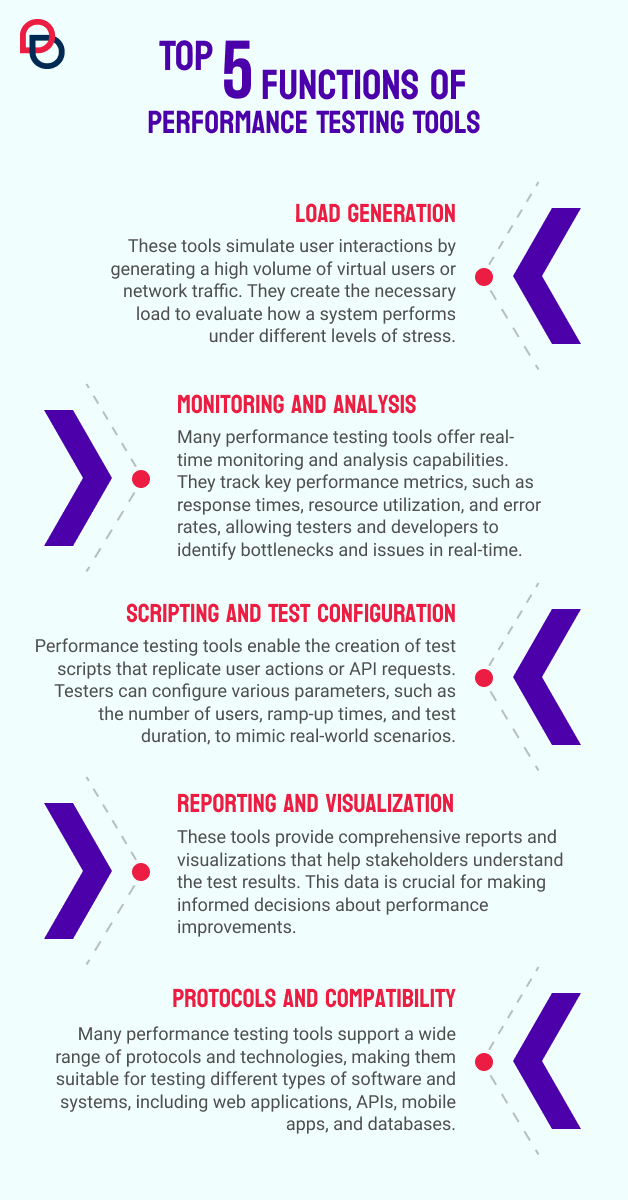Load Up for Success: The 9 Vital Reasons to Invest in Performance Testing
Brands are becoming increasingly reliant on high-quality, high-performance applications to interact with their customers. As a result, there is a considerable emphasis on ensuring that the apps launched deliver a seamless user experience and meet their expectations.
Businesses must guarantee that their apps can overcome challenges such as bad network conditions, high user loads, and restricted bandwidth. This can only be accomplished by testing the software or apps being deployed under various performance scenarios.
Let’s explore how businesses can benefit from investing in performance testing.
What is performance testing?
Performance testing is a type of non-functional software testing that validates an application’s speed, responsiveness, scalability, and dependability. This kind of load testing depicts whether the program functions smoothly over different bandwidths, networks, and user loads.
If you are willing to know how to performance test a website, keep in mind the issues it can trigger. Some of the issues detected with this form of testing include runtime errors, optimization issues relating to speed, response times, latency, load balancing, and others. Performance testing determines whether a website, web service, server, mobile App, network, or database is ready.
Performance testing for web Apps employs software tools to simulate how an application functions under a realistic workload thereby, comparing the results to industry standards and benchmarks.
The global performance testing market is estimated to increase at a CAGR of 11.1% between 2017-2030, from USD 1.02 billion in 2017 to USD 2.51 billion by 2030. The increasing demand for web and mobile Apps, as well as the requirement to ensure the quality and reliability of these applications, can contribute to the expansion of the global performance testing market.
In North America, the US, Mexico, and Canada lead the performance testing market. Besides this, European countries such as Germany, France, the UK, Italy, Turkey, and Russia also top the list. In the Middle East and Africa, Saudi Arabia, Egypt, the UAE, South Africa, and Nigeria lead the performance testing market. Conversely, in Asia-Pacific, India, China, Malaysia, Thailand, Australia, and the Philippines lead the market, whereas in South America, Columbia, Brazil, and Argentina lead the market.

Source: Global Performance Testing Market/ Data Intelo
Understanding the types of performance testing
There are several types of performance testing, each focusing on distinct aspects of a system’s performance. This includes
- Mobile Performance Testing: Mobile performance testing is designed to assess the responsiveness, stability, and scalability of mobile applications on different devices and network conditions. It evaluates how well the app performs under various scenarios, such as different screen sizes, operating systems, and connection speeds.
- Load and Performance Testing: Load testing and performance testing are often used interchangeably but address different aspects of performance. Load testing examines how a system performs under expected load conditions, ensuring it can handle anticipated user traffic. Performance testing, on the other hand, evaluates the overall system’s performance, including speed, responsiveness, and stability.
- UI Performance Testing: UI performance testing focuses on the user interface aspects of an application. It assesses the responsiveness and fluidity of the user interface, examining factors like rendering speed, animations, and the user experience. A responsive UI is critical for user satisfaction and engagement.
- Latency in Performance Testing: Latency in performance testing evaluates the delay or lag experienced by users when interacting with a system. This is especially important for applications that rely on real-time data, such as online gaming or financial trading platforms. Reducing latency is essential to ensure a seamless user experience.
Choosing the appropriate type of performance testing depends on the specific goals and requirements of the project. By conducting comprehensive performance testing, organizations can identify and address performance bottlenecks, ensure a positive user experience, and ultimately deliver reliable software or applications to their customers.

Why do businesses invest in performance testing?
Performance testing in software testing is carried out concerning the assiduity-specific markings, with ultimate perfection and inspection of the testing results to affirm that the operation functions flawlessly in all circumstances.
Continue reading to understand why investing in performance testing is crucial for business organizations.
- Enhances website speed for better customer engagement
A slow and unreliable website will never attract massive visitors. Instead, it will discourage visitors from accessing the site. Through automation tools, teams can test the website’s speed and performance.
Users can load the site with basic bandwidth access via performance testing, which will keep them engaged.
- Better ROI with improved website loading
Although this is true for almost all websites, it is especially important for businesses that require direct customer interaction and involvement. For instance, banking and e-commerce Apps must provide customers with an effective and safe user interface. This will help the App gain popularity as it is regularly visited by users.
- Highlights flaws before reaching the target customers
Different forms of performance tests can assist you in identifying the flaws in your operation or website, thereby, resolving the difficulties that can interfere with fulfilling consumers’ needs and requirements in the real world.
- Fail-over tests are used to assess redundancy mechanisms.
- Trustability tests ensure operations without any failure along with high-position loads for a significantly longer time.
- Stress testing evaluates how much a system can withstand pressure.
These tests can aid in identifying the flaws in the operation, allowing it to be ready to reach the intended audience.
- Improved scalability
Performance testing determines how well an application can handle an increasing number of users, data volumes, and transactions. This allows firms to plan and execute scalability solutions ahead of time, preventing unexpected failures and affirming that the application can handle increasing demand.
Thus, performance testing is an important step in guaranteeing the success of software applications and assists enterprises in providing high-quality, scalable, and dependable solutions to their consumers.
- Cost savings
Performance testing identifies performance issues before application deployment, lowering the chance of application downtime and failures. This turns into cost savings for the organization. Using performance testing, businesses don’t have to pay for emergency repairs, lost revenue concerning downtime, or significant legal fees and fines due to data breaches.
- Improved user experience
The performance of an application is crucial in defining the user experience. Slow, unreliable, or unresponsive applications can degrade the user experience and harm the organization’s reputation. Performance testing aids in identifying bottlenecks, resolving errors, and enhancing the overall application performance, triggering effective user experience.
- Enhances application’s dependability
Businesses must ensure that their applications stay stable under the most difficult situations, such as cyber-attacks, network outages, or virtual threats.
For instance, Targeted Infrastructure Tests are isolated tests that examine each layer of an application to mark performance issues that may trigger hiccups while delivering the intended performance.
- Identifies issues with APIs and databases
Both data sourcing and the efficacy of the Application Programme Interface (API) are crucial these days. For instance, load/stress testing assists teams in depicting how the application performs and whether the server responds efficiently to the user with data concerning a definite period. It also determines the API’s performance and behavior under high pressure.
- Evaluates various technology stacks
Due to the complexity of software applications, various technology stacks are being implemented. This is to ensure that the intended outcomes and deliverables are met within the deadline. Performance testing marks the flaws in the technology stack that was used to construct the application.
Wrapping Up
There are various reasons why you should test the performance of your application. One of the most critical reasons is to verify that your web application, server, and website are working as expected even under increased load.
Regular performance testing will guarantee that your website is operating at peak efficiency, resulting in increased uptime, less maintenance, and more user involvement. So, if you are looking at how to check website performance, hire an expert who specializes in performance testing. Get started today!




